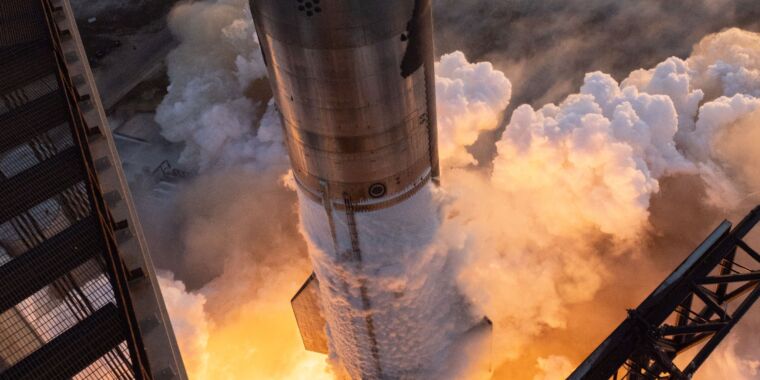February 26, 2024
Shana Diez
Director of Starship Reliability Space Exploration Technologies 1 Rocket Road Hawthorne, California 90250
Dear Ms. Diez,
On November 18, 2023, at 13:02:50 UTC, Space Exploration Technologies, Inc. (SpaceX) conducted Starship Super-Heavy Orbital Test Flight 2 (OTF-2) launch operations from its Boca Chica, Texas site under Federal Aviation Administration (FAA) launch license VOL 23-129 Rev. 1. After a successful ascent and stage separation, the Super-Heavy Booster 9 (B9) suffered a mishap during its boostback burn resulting in a mid-air explosion and vehicle loss.
Following a successful start-up of all engines and separation from B9, Starship Ship 25 (S25) had a nominal ascent until 13:09:55 UTC, when the planned pre-second engine cutoff Liquid Oxygen dump started. Over the next minute, several explosions and sustained fires were observed in onboard camera aft video streams, ultimately resulting in a loss of communication between the forward and aft flight computers. This resulted in a commanded shutdown of all six engines, and an Autonomous Flight Safety System flight termination triggering at 13:10:55 UTC per flight safety rules.
The FAA classified the Starship Super-Heavy OTF-2 launch as a mishap, as defined in Title 14 Code of Federal Regulations (14 CFR) § 401.7 paragraphs (7) and (9).¹
Following the launch, the FAA, consistent with its statutory authority under Title 51 of the U.S. Code and 14 CFR § 450.173(e), required SpaceX to conduct a mishap investigation following its approved mishap plan under FAA oversight. The FAA conducted a final review of the B9 and S25 mishap reports. The primary focus of these reviews was to ensure operator compliance with 14 CFR § 450.173. The FAA has been provided with sufficient information and accepts the root causes and corrective actions described in the mishap reports. Consequently, the FAA considers the mishap investigation that SpaceX was required to complete to be concluded.





